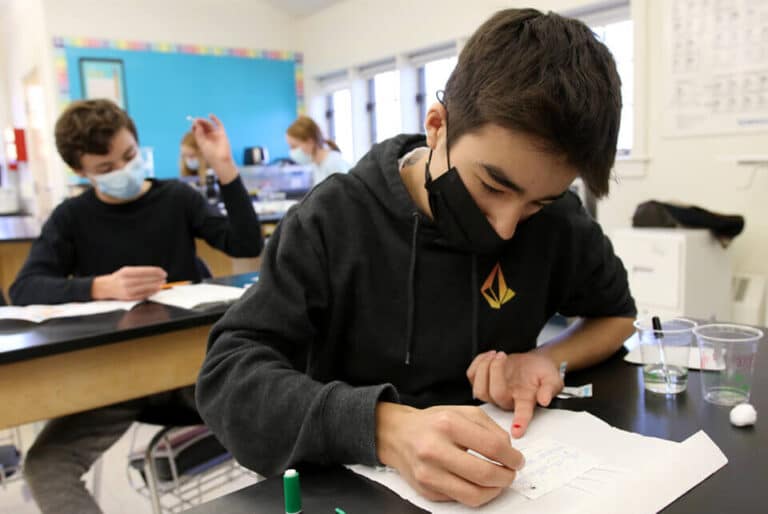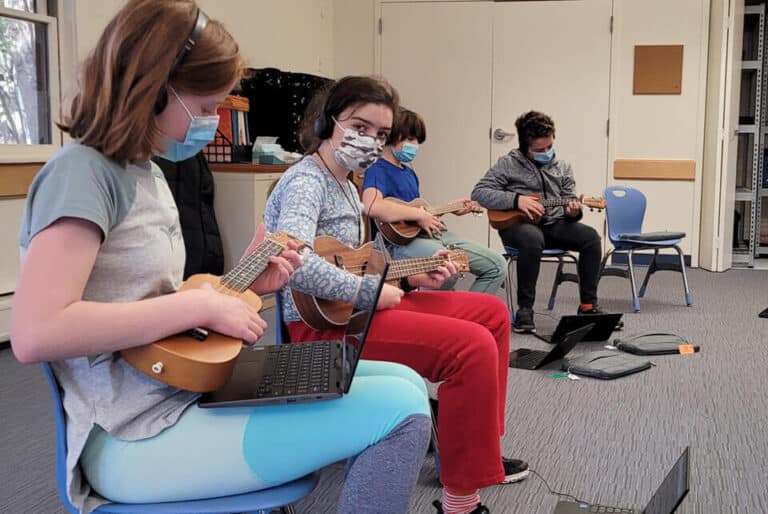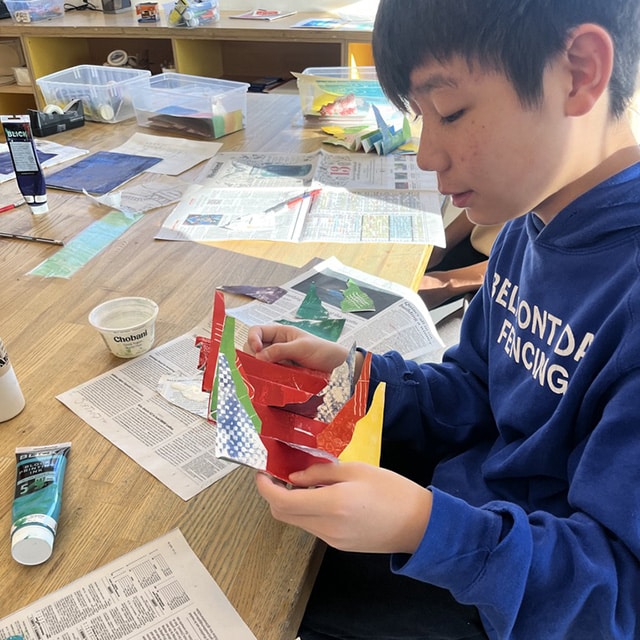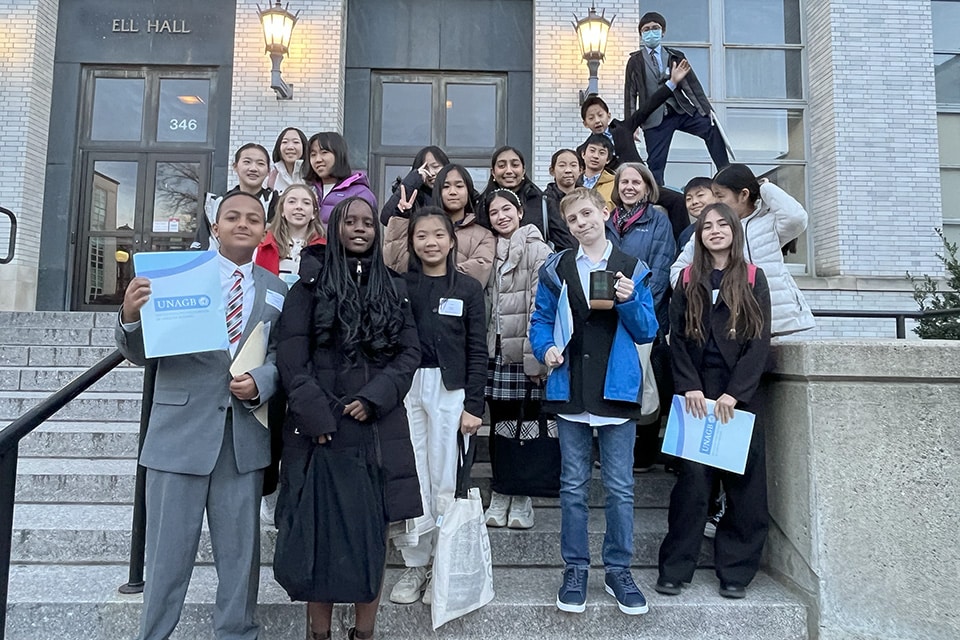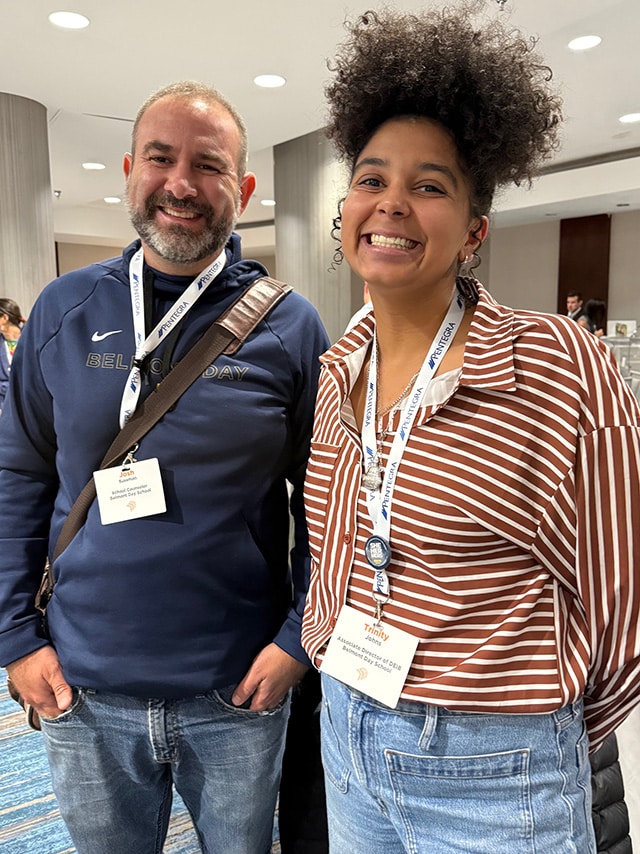Spanish Students Learn Traditions of Day of the Dead
El Día de los Muertos, or Day of the Dead, is a Mexican tradition to celebrate life and honor the loved ones who have died. The holiday is celebrated from October 31 through November 2. Spanish students at BDS celebrated and honored this tradition, watching videos and engaging in various activities. Sixth grade students learned about the history of the holiday, the differences between Halloween and Día de los Muertos, and drew altars. Seventh grade students wrote biographies and created altars for a person they had chosen, and eighth grade students constructed altars and baked pan de muerto.
Fifth Grade Explores How Languages Get Started
During the fifth grade language, culture, and community class, students observed and discussed how humans started learning language and learned some scientific theories for the first words. After a series of activities and observations, the students wrote their hypotheses and shared them with the group. It was so fun to see them working as linguists and explaining and discussing their theories.
– Ana Maria Restrepo, grade 5 foundations for language learning and middle school Spanish teacher
PE Update: Trail Adventures
If you happened to be walking through Lone Tree Hill this week, you may have noticed very polite and adventurous students enjoying the late-fall sunshine. Our physical education classes were trail-oriented this week, with cross-country, outdoor adventures, and hiking units occurring across the lower school grades.
The trails offer an incredible opportunity to learn about stewardship, develop fitness, and practice mindfulness. We learned hand signals so our shouts wouldn’t disturb other nature appreciators (be they human or animal), paused to listen to the sounds or observe the sights around us, built cairns, and tried our hands at catching falling leaves. It was a reminder of how fortunate we are to have such wondrous landscapes accessible directly from our campus, and a chance to connect with the land and with one another.
– Alex Tzelnic, physical education teacher
Arts Update: Sixth Graders Start Strumming String Instruments
After sharpening their rhythmic and collaborative skills with bucket drums, the sixth graders in music class have begun learning to play the ukulele. This week, they kicked off the unit by learning one of the most famous ukulele songs of all time: Aloha ‘Oe by Queen Lili’uokalani. After learning about the fascinating history behind the song, its composer, and the cultural context in which it was written, they learned how to play the chords and strum a steady pattern — the first step in playing any accompaniment instrument. Later in the week, they start to play melodies, learn the names of the notes, and compose their own strumming patterns for songs. The unit focuses on breaking down the musical elements of ukulele playing and tinkering with them. What would happen if we strummed in 3 instead of 4? How would it sound if we used different chords here? Questions like these are what we explore in our musical time together.
– Tyler Cotner, music teacher
Eighth Grade Science Learns About Blood Types, Human Inheritance
In eighth grade science, students have been studying patterns of human inheritance, specifically how blood types are passed from parents to offspring. On Tuesday, students had the opportunity to test their own blood to determine their blood type. Using an Eldon card, students combined a small sample of their own blood with the antibodies on the card. Then they waited for the blood samples to react with the antibodies on the test cards. On Thursday, students took some time to examine the distribution of blood types in their class in relation to the distribution of blood types in various racial groups. They found that the distribution of blood types matched fairly well for some blood types and less well for others across each of the races. For example, approximately 50% of the students who tested their blood were type O, while 11% of the students were type AB. This activity also allowed students to revisit the concept of probability and the idea that sufficient data is necessary to ensure that the outcomes provide meaningful information.
– Sandra Trentowsky, grades 7 & 8 science teacher
Second Grade Combines Science and Art for New Garden Mural
Second graders have begun working on their class mural, based on the book Up in the Garden, Down in the Dirt by Kate Messner. This collective mural of the BDS Garden will highlight the interconnectedness of insects and birds to the garden’s success, as well as how different plants thrive and grow. Each student is using photos of various garden items, including insects, birds, and a range of vegetables and colors, to create a mural that shows how our garden grows. As a group, the students will paint a background to depict the soil and root vegetables below, the plants growing above ground, and the variety of species of insects and birds that help out above the garden.
As part of their science curriculum, students make weekly visits to the garden to explore, using all their senses, participate in garden maintenance, observe our honeybee hives, and learn about vegetables, pollinator plants, and their importance. These activities lay the foundation for their later exploration of food access and food insecurity in the classroom.
– Nancy Fell, grade 2 teacher
